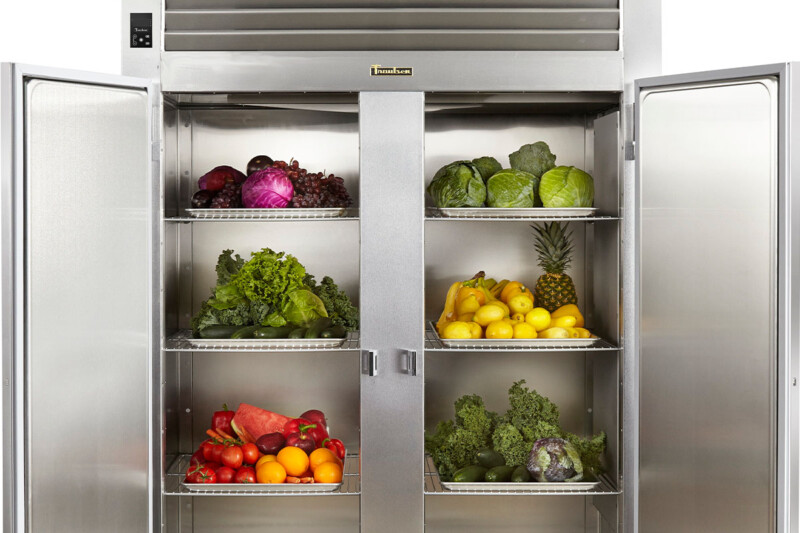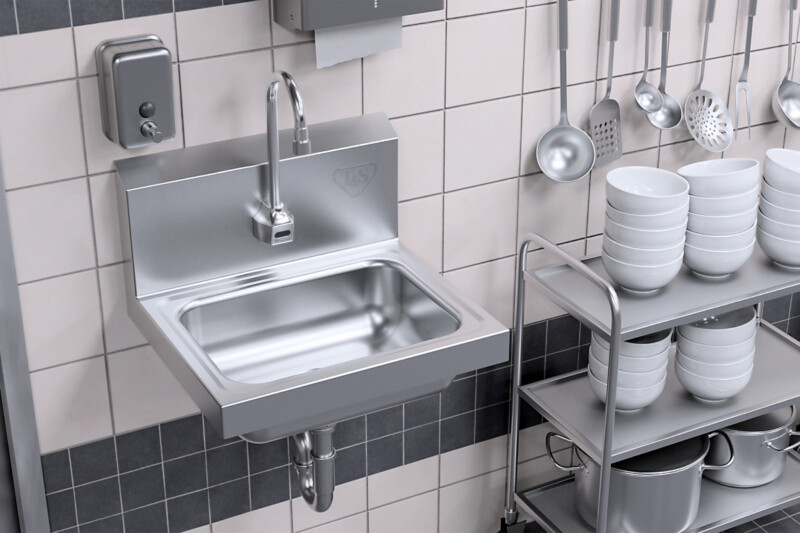Making Deck Oven Decisions
Get ready to find a pizza deck oven that offers the perfect bake for your pies.
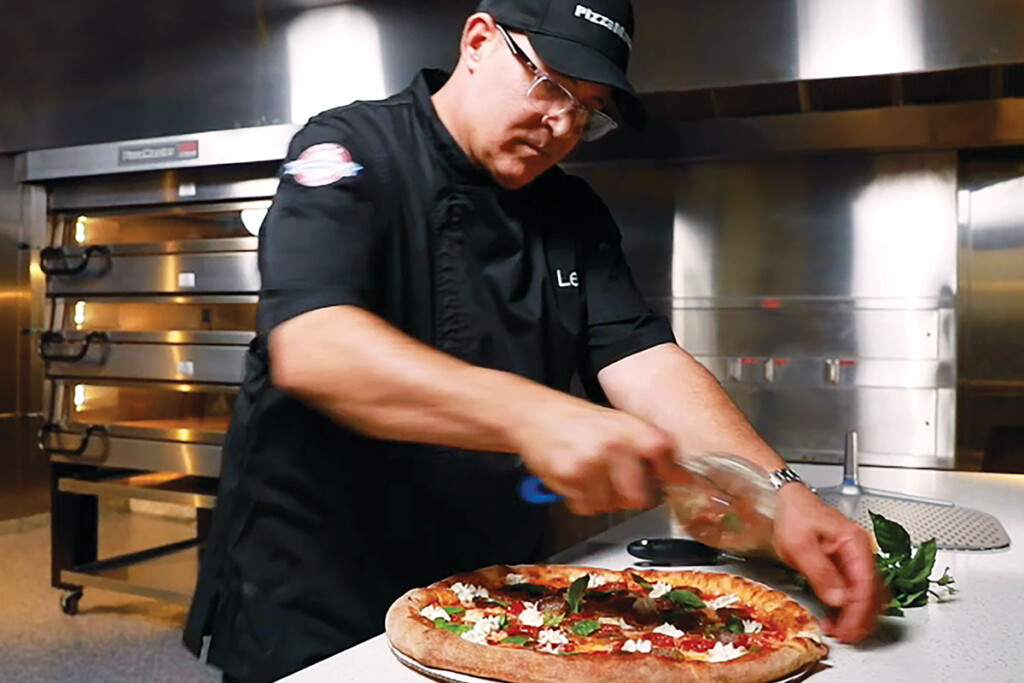
Over half (52%) of American consumers say they could eat pizza at least once a week and not get tired of it, according to foodservice analytics firm Technomic. While a lot of the pizzas needed to meet that huge demand come rolling out of conveyor ovens at major chains, many are baked in deck ovens, especially in smaller chains and independent pizzerias.
Most deck ovens feature a stone deck, designed to heat the crust evenly, as the stone’s porous structure removes moisture from the dough to create a crispy texture. While some operators prefer the charm and craftsmanship of woodburning or coal-fired hearths, and others rely on the ease and consistency of conveyor ovens, a deck oven hits the sweet spot for many operators.
The traditional pizza deck oven—with a rectangular chamber and a door that closes tightly—remains popular, despite an increase of hybrid hearth deck models that aim to simulate baking on a traditional hearth, with features like arched stone-lined ceilings, open flames from the side of the chamber, and doorless chambers. Some hybrid ovens are finished with a brick facade, making attractive centerpieces. While hearth deck ovens are popular with some operators, this article focuses on traditional pizza deck ovens, including gas and electric models.
The past few years have seen an upsurge in electric deck ovens, along with technology advancements that promise an even bake, more precision and control, quicker temperature recovery and higher temperatures. Manufacturers of these newer product lines each have their own secret sauce—in the form of software, sensors and algorithms—that they say bakes the perfect pizza.

Some models have gone from analog to digital controls. Courtesy of Fiero Forni.
Gas vs. Electric
The increase in electric ovens has grown out of the electrification movement spreading across the country. Nearly 100 U.S. jurisdictions have enacted regulations that limit the use of natural gas in buildings and require all-electric appliances in new commercial or institutional construction, according to the Building Decarbonization Coalition.
Nevertheless, gas remains a popular option for pizza deck ovens. Electrification laws are in limited areas and rarely pertain to existing structures. Many operators are happy with the performance of their gas deck ovens, find they get a good bake, and look to buy a similar model when time comes to replace these workhorses. There are accounts of restaurants using 75-year-old gas deck ovens to keep up with today’s business demands.
On the other hand, electric ovens offer more precision and control. While gas models have burners below each deck, electric ovens typically have heating elements below the deck floor and on the chamber ceiling. The top and bottom heating elements are controlled independently in many models, allowing operators to adjust the heat precisely to their needs, depending on factors like their dough formula, the topping amount and whether a pan is used. One new line lets operators pinpoint the heat intensity to an individual percentage point, whereas its older line is limited to four settings: 25%, 50%, 75% and 100% intensity.
Sophisticated electric models feature an array of heating elements that work in conjunction with sensors and software to keep the oven at an even baking temperature. In one product line, a sensor detects if you pull a pizza off the deck, sending a message to the deck to direct more energy to that spot to hasten the recovery time. Likewise, the oven can direct more heat intensity from the front elements to compensate for temperature disturbances when the oven door is opened.
Some gas models use low-tech vents to offer directional control of the heat. By opening or closing the vents, you can choose between directing the heat to the deck or to the top of the chamber.
The Perfect Bake
Pizza is a perennial favorite among Americans, but there’s little agreement on what makes a great pie. What may appear perfectly charred and crispy to one person looks burnt to someone else. To find an oven that produces the perfect bake for your pizza, consider several items.
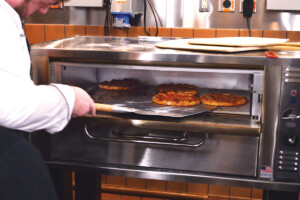
Visit a test kitchen to try out different models’ temperatures and settings, makers advise. Courtesy of Blodgett.
The oven’s temperature range is a key factor. For New York style pizza that bakes at 500°F to 600°F, you’ll find possibilities in both gas and electric models. If you’re looking to make an artisan pizza with a crispy, charred crust, you’ll want higher temperatures, available on some electric models. The thermostat on most gas models taps out at 650°F. Some electric models extend into the 800s, and others go into the 900s to cook Neapolitan-style pizzas in 90-120 seconds. Keep in mind that baking pizza at higher temperatures requires dough with plenty of water, say 60% to 70% hydration, and finely ground 00 flour.
Operators looking to expand their customer base by offering both traditional and artisan pizzas may require two types of ovens. One maker offers a stacked configuration featuring two electric ovens, one that maxes out at 662°F, topped with one that extends to 932°F.
The type of pizza stone also impacts your final product. Common materials include synthetic cordierite, a temperature-resistant mineral compound; FibraMent, an NSF-certified blend of kiln-fired materials; and other ceramic/clay mixes. At least one company uses Biscotto di Sorrento pizza stones, made of a clay mixture and characterized by air inclusions that ensure the pizza never lies completely flat, to help prevent the crust from burning even when baking at high temperatures. Steel decks also are available, but be cautious because pizza can burn quickly when baked directly on steel. Steel may be more suitable if you’re baking pan pizza.
Deck Decisions
Other factors to consider when specifying a deck oven include:
Pizza size: Are you baking personal pizzas, 18-inch New York pies, 10 x 14-inch Detroit pizzas, or a combination of sizes? Your pizza dimensions will dictate your oven options. Are you looking to get in on the by-the-slice trend and bake a 20-inch pie with mega-size slices? A new electric model debuting this spring bakes eight 20-inch pizzas on one deck.
A new electric model debuting this spring bakes eight 20-inch pizzas on one deck.
Volume. How much demand do you expect at peak times? A common mistake is selecting an oven that is quickly outgrown; go larger if you project sales will expand in the next few years. If you’re unsure about growth potential, consider a setup where you can stack on another oven later, if needed.
Space constraints: A high-volume oven might measure 78 inches wide or more. If that doesn’t fit your space, consider a narrower multichamber oven, or stack multiple units to increase throughput without expanding the footprint. Electric models offer up to five stacked chambers. Gas units are frequently double-stacked, and occasionally triple-stacked. With a burner assembly under each deck making gas configurations taller, it may be difficult to stack more than two units and still be able to bake comfortably.
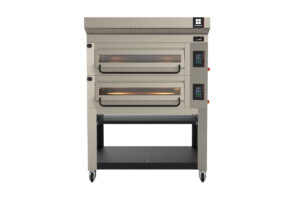
Glass doors (2) help in monitoring pizza, but windows need to be cleaned regularly. Courtesy of Pizza Group.
Glass doors and inside lighting: These features help employees monitor pizzas without opening the oven door and letting in cooler air. The downside is the windows must be cleaned regularly. One manufacturer recommends using a vinegar-and-water solution or Bar Keepers Friend.
Ease of use: Options include digital controls, menu programmability and auto-start times. Consider the oven height and its effect on ergonomics, as well as which direction the door opens (most pull down, but some lift up).
Steam option: Some deck ovens offer steam injection, giving the flexibility to bake breads and pastries. This added flexibility could be useful in a corporate cafeteria, university dining hall or other operation that bakes pastries in the morning and pizza for lunch and dinner.
Grab a slice!
Taste test before making a final decision. Bring plenty of dough to the test kitchen to allow experimentation with different temperatures and settings. Then, bake another 25 or so pies to simulate business conditions and test for consistency, recommends one manufacturer.
Counter Intelligence
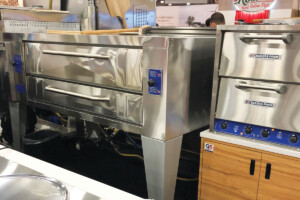
Space constraints mark a top consideration for deck ovens, with options ranging from small countertop units all the way up to 84-inch wide full-size models. Courtesy of Bakers Pride.
A countertop deck oven is the perfect fit for many foodservice operations, including convenience stores, bars, food trucks and grocery stores, as well as restaurants looking to add pizza to their menu. Some pizzerias supplement their full-size ovens with a countertop unit for overflow or for baking gluten-free pies. These small but mighty ovens also are ideal for reheating pizza slices, because they produce a crisp crust.
Consider these three factors when purchasing a countertop unit:
Menu. Countertop units can retherm pretzels, bake cookies and warm subs—in addition to baking and reheating pizza. Some models offer moisture adjustment to match a menu item’s specifications.
Size. One unit might be only 23 inches wide, while another measures 42 inches wide. What fits your space and needs? Note that multi-deck and stacked units are available.
Placement. If you’re using a countertop oven to reheat pizza, place it where crew members can load it quickly, without interfering with the kitchen flow.
For gluten-free baking, consider separating the countertop oven from your pizza prep area in order to prevent flour cross-contamination.
Piece-by-Piece
Your deck oven’s abilities and features are an important piece of the pie. Get to know eight makers’ models.
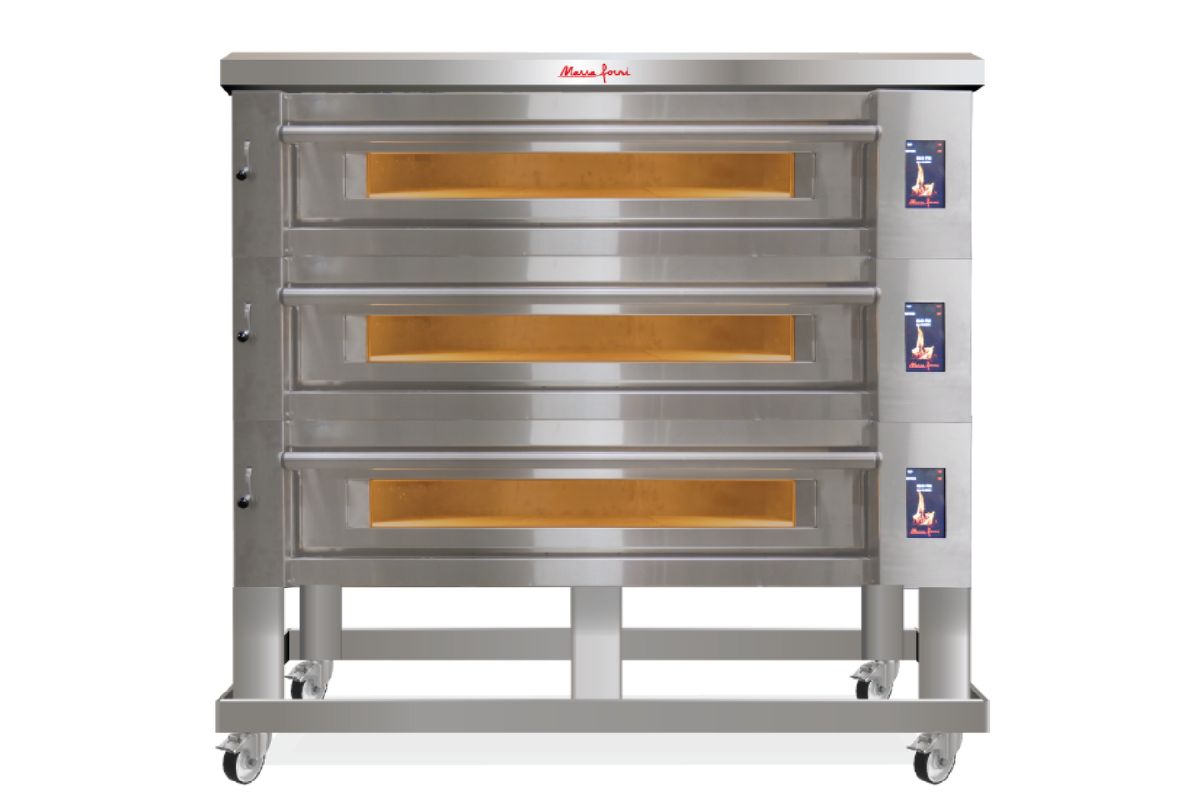
Marra Forni
Model: ELST55-36/3
Utilities/Temperature: Electric/up to 950°F
Details: Independently adjust lower and upper radiant heat settings on this unit’s touch screen, and keep tabs on your products with windows on each deck. Cook up to six 16-in. pizzas per deck on this model, or consider other configurations and an option to stack up to four decks for more capacity.
Website: marraforni.com
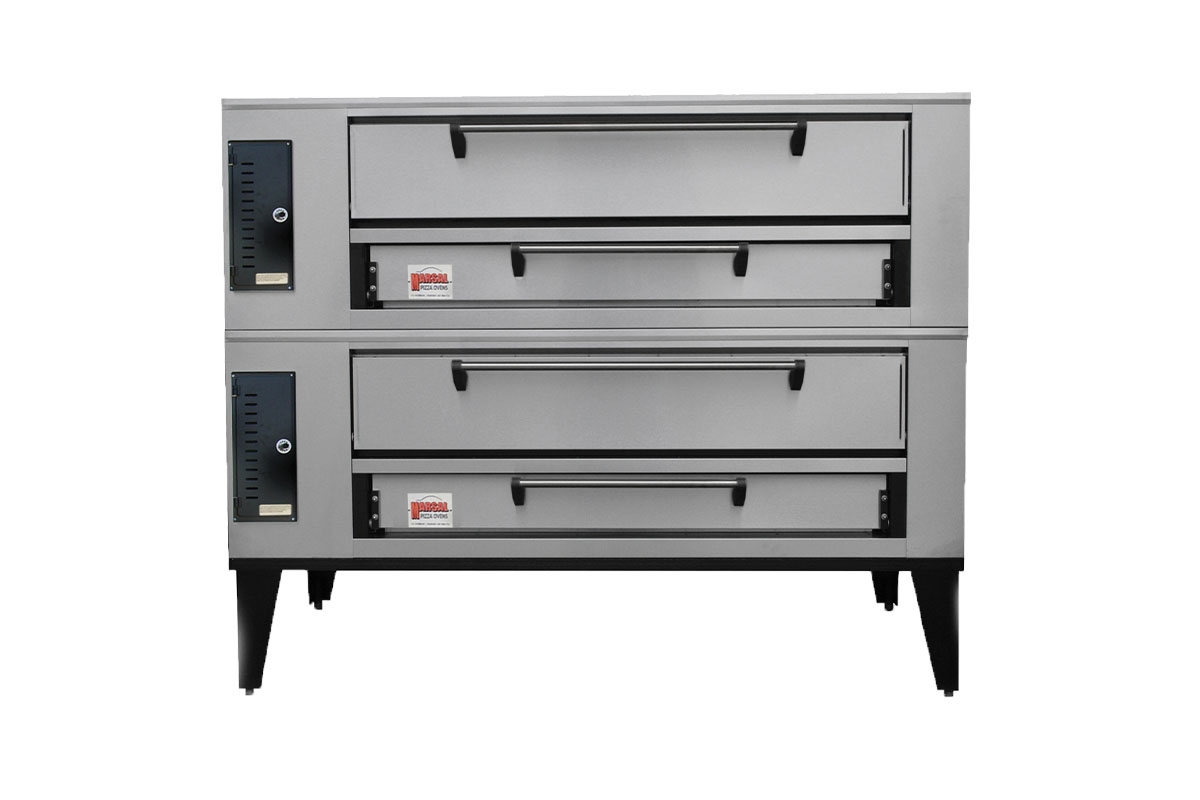
Marsal
Model: SD 6 Pie Series
Utilities/Temperature: Gas/300°F to 650°F
Details: A left-to-right burner design and 2-in. thick stone cooking surface—as compared to 1½-in. thick for competitors—differentiate this model and aid in even heat distribution. Consider three stacking options, two door height options (7-in. or 10-in.) and add-ons like a firebrick-lined chamber ceiling or automatic-start timer.
Website: marsalovens.com
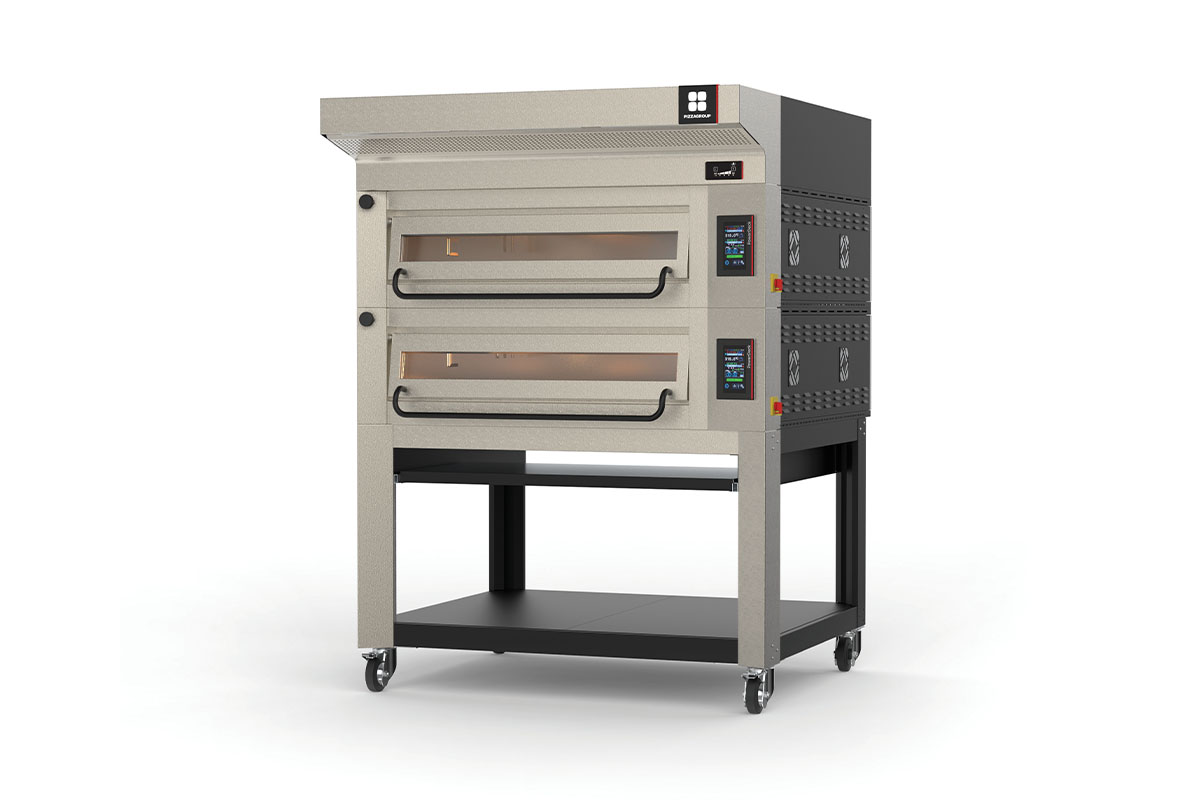
Pizza Group
Model: PowerDeck
Utilities/Temperature: Electric/up to 840°F
Details: Up to 25% lower energy consumption and 50% lower heat-up time differentiate this model from traditional units, according to the maker. Specify up to three baking chambers and pre-program up to 10 menu settings.
Website: pizzagroupusa.com
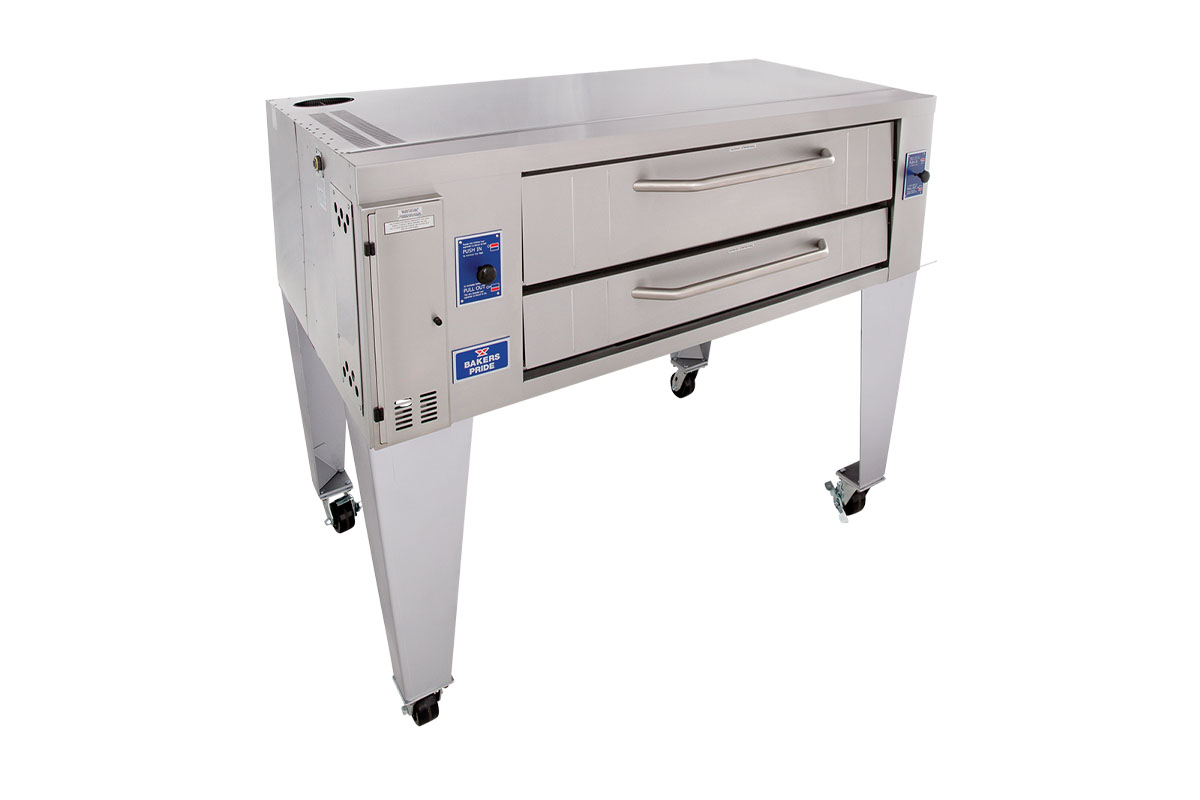
Bakers Pride
Model: Y Series
Utilities/Temperature: Gas/300°F to 650°F
Details: Adjust top and bottom heat to match baking preferences. The series offers two deck sizes: one size fits six 16-in. pizzas and the other, eight. Stack up to two units for four decks total.
Website: bakerspride.com
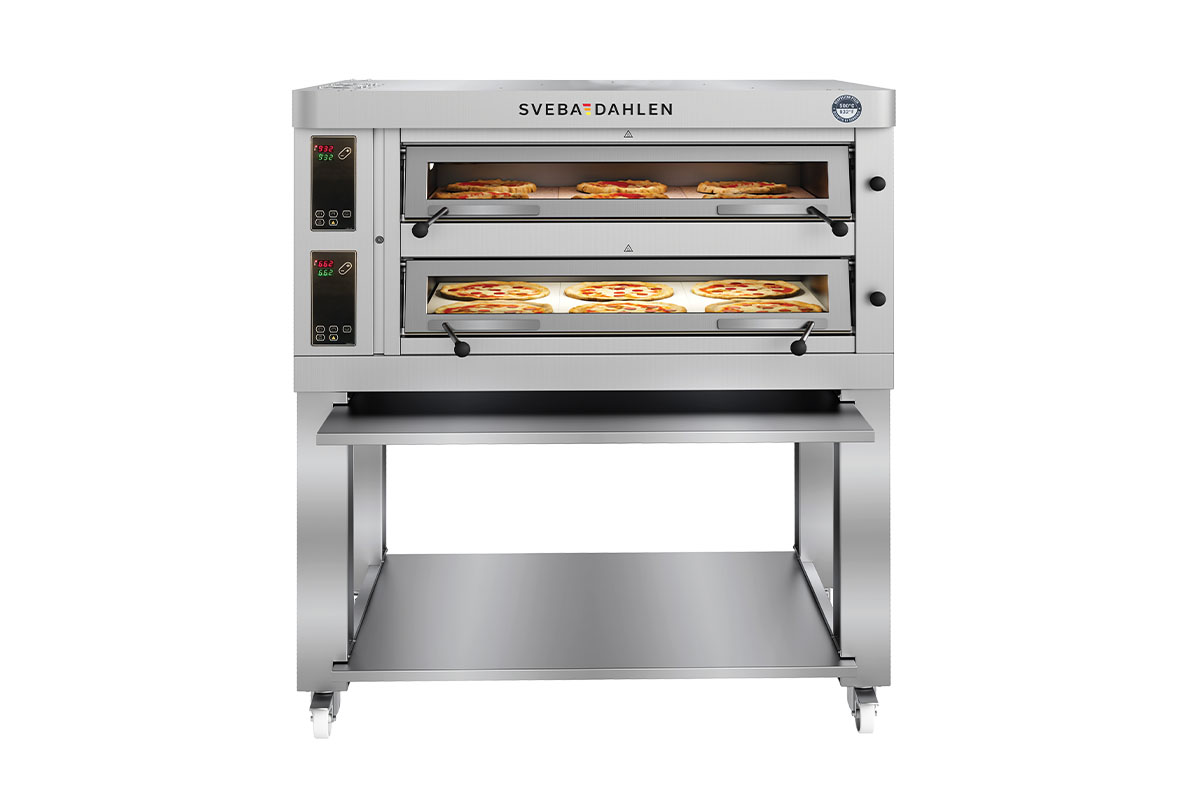
Sveba Dahlen
Model: P602HT
Utilities/Temperature: Electric/lower deck up to 662°F, top deck up to 932°F
Details: Thirty minutes after startup, this unit can bake pizza in under two minutes. Outfitted with Biscotto di Sorrento pizza stones, which help prevent burning, and with top, bottom and front heat controls, the oven can make up to 12 pies of assorted types across its two decks (see temperature limits above).
Website: blodgett.com/sveba

PizzaMaster
Model: PM 1144 ED
Utilities/Temperature: Electric/up to 932°F
Details: Independent top and bottom heating elements add control. Power regulating tech saves energy; after reaching the set temperature, power consumption drops by 65% to an average use of power to 35%, the maker says. Stack as many as five decks, and cook up to eight 20-in. pies per deck.
Website: pizzamaster.com
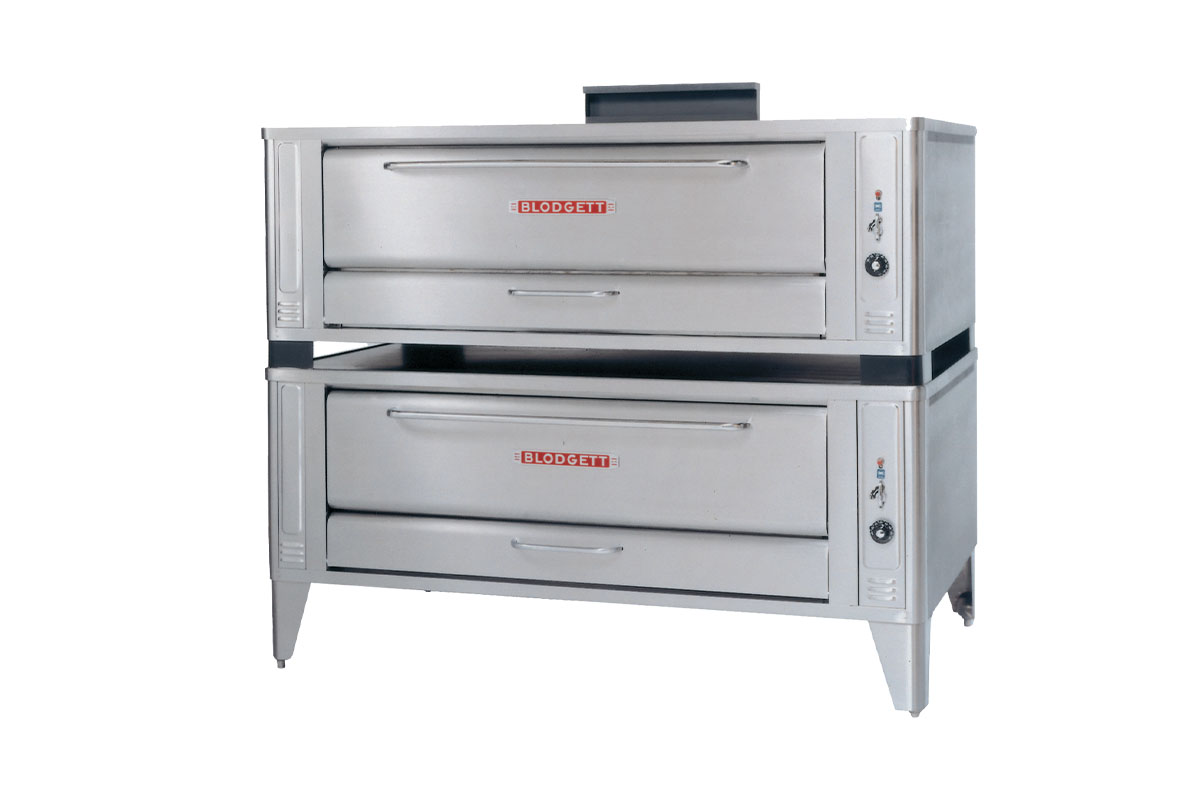
Blodgett
Model: 1060
Utilities/Temperature: Gas/300°F to 650°F
Details: Just three controls—an automatic safety pilot valve, manual control valve and the thermostat—drive this unit. Inside, natural convection airflow and a QHR Rokite stone deck combine to deliver a “delicate” bake and crisp crust. Make up to six 16-in. pizzas on a single deck, or stack units for double the capacity.
Website: blodgett.com
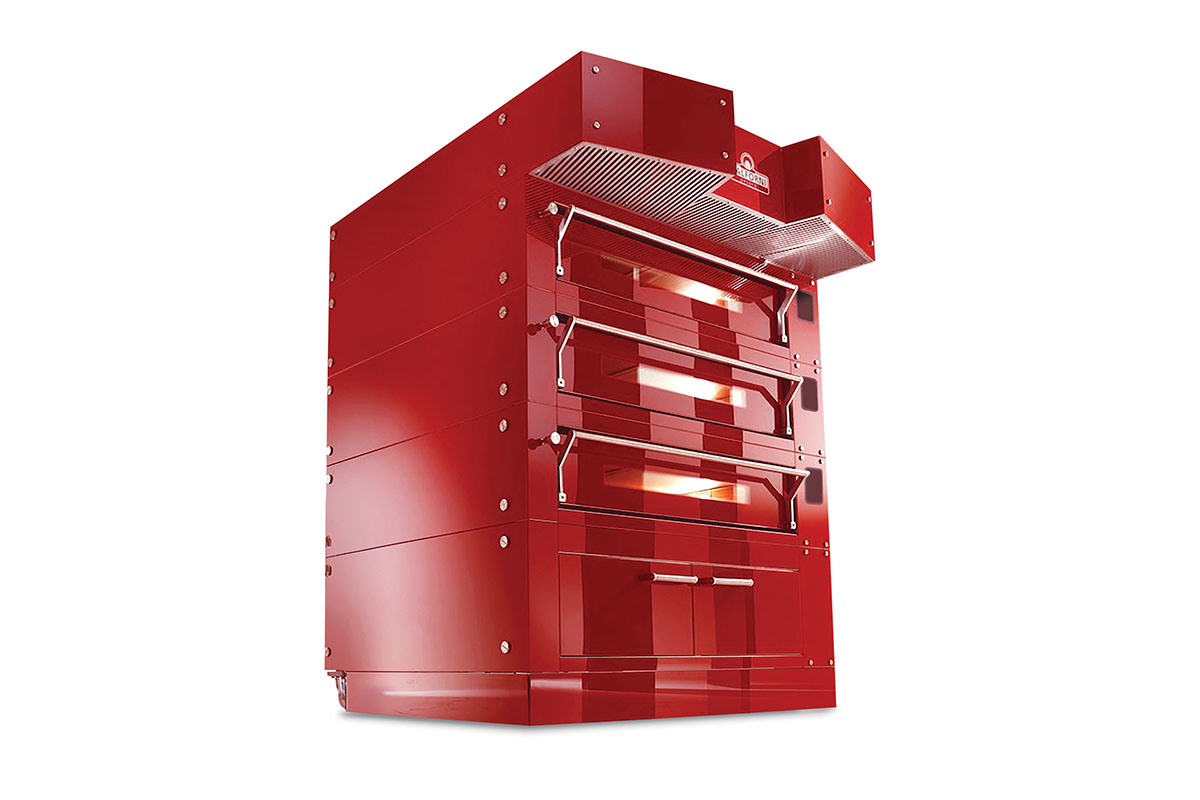
Fiero Forni
Model: Bull-XL3
Utilities/Temperature: Electric/up to 842°F
Details: Make multiple styles of pizza across three chambers. On one brick deck, cook up to five 16-in. pizzas, then cook up to seven 13-in.W x 18-in.D pans on another. Use a touch screen to adjust each chamber’s top and bottom heat. Choose from black or red tempered glass exterior options.
Website: fierogroup.com
RELATED CONTENT
- Advertisement -
- Advertisement -
- Advertisement -
TRENDING NOW
- Advertisement -
- Advertisement -
- Advertisement -

